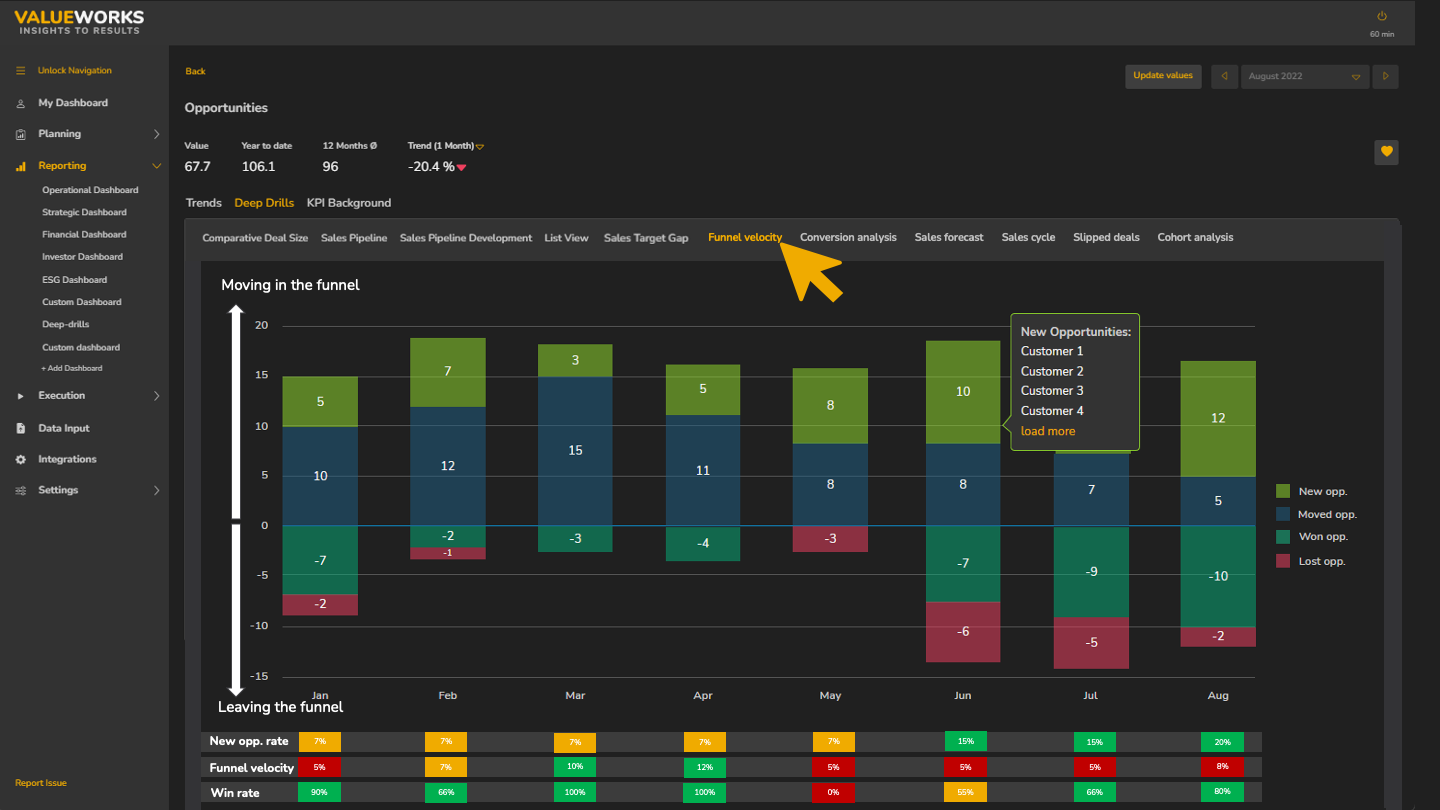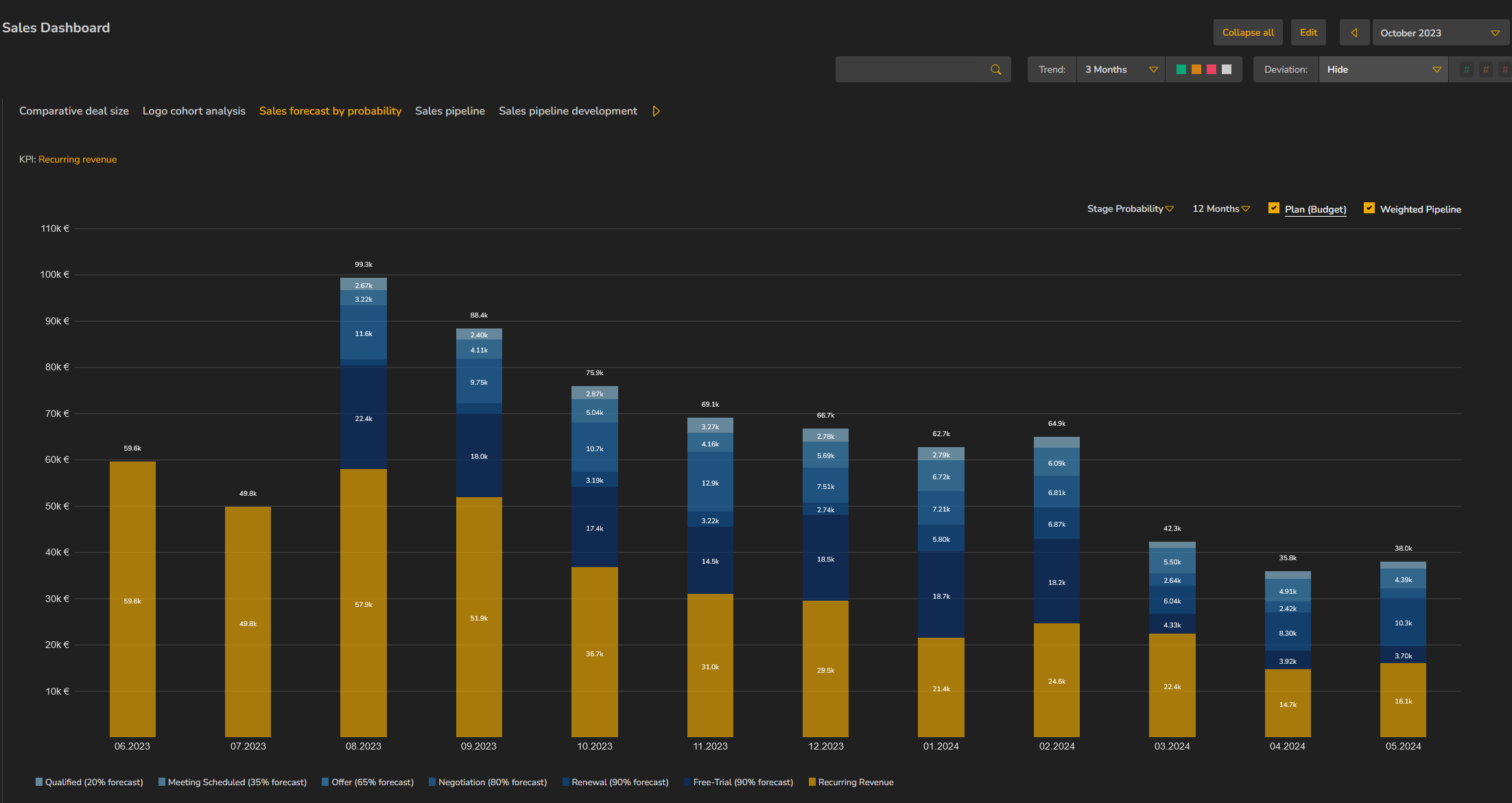Introduction
Sales, the heartbeat of any business, is a race against time. In the business world, efficiency is money, and to measure this efficiency, we turn to an influential metric known as sales velocity. This metric isn’t just a number; it’s the key to redefining your sales pipeline and processes, ensuring you convert more leads, and ultimately boost your revenue. In this comprehensive guide, we’ll delve into the world of sales velocity, decipher the formula, explore its components, and discuss why it’s crucial to both track and enhance this metric.
What Exactly is Sales Velocity?
Sales velocity, often hailed as the lifeblood of businesses, is a metric that quantifies how swiftly a potential customer progresses through your sales pipeline, culminating in revenue generation. It serves as both a barometer of your sales team’s effectiveness and a spotlight on areas for improvement.
More than just an internal compass, sales velocity has a pivotal role in sales forecasting. This powerful metric lets you predict future revenue with greater accuracy, allowing for the efficient allocation of budgets in line with expected gains and losses.
Decoding the Sales Velocity Formula
Calculating sales velocity is a straightforward task, provided you comprehend its core components and have a well-structured sales pipeline. The formula for sales velocity is as follows:

To correctly compute your sales velocity, you must grasp the significance of the four essential components:
- Sales Cycle Length: A shorter sales cycle is often preferred because it allows sales representatives to move on to the next prospect more quickly. The goal is to expedite the sales process without compromising the customer’s experience, all while building and nurturing a strong relationship.
- Win Rate: Before you can incorporate it into the sales velocity formula, you must first calculate your win rate. This can be achieved by dividing the total number of sales won by the total number of opportunities. Similar to the number of opportunities, the win rate sees improvements through effective lead qualification. High-quality leads tend to convert more.
- Deal Value: Deal value, sometimes referred to as average deal size, is the typical monetary value of deals your prospects choose to close. Understanding the range of deal values for your products or services is crucial, as it empowers you to cater to customer needs and potentially persuade them to make more substantial purchases.
- Number of Opportunities: This represents the total number of qualified leads within your sales pipeline. The emphasis here should be on lead quality rather than sheer quantity. It’s about nurturing high-quality leads, which not only saves time and energy but also significantly boosts your sales velocity.
Strategies to Accelerate Sales Velocity
Increasing sales velocity necessitates a strategic approach focused on enhancing the four components within the sales velocity formula:
- Boost the Number of Opportunities: Instead of generating a vast quantity of leads, concentrate on creating high-quality opportunities. Qualified leads have a higher conversion rate, and the focus should shift from quantity to quality.
- Push Average Deal Size: Increasing the average deal size isn’t about arbitrary price hikes. It’s about offering value-added products or services that cater to customer needs. Identifying pain points and aligning offerings can lead to more substantial purchases.
- Increase Win Rate: To improve the win rate, it’s essential to understand why prospects exit the sales pipeline. Identifying the specific reasons and locations within the sales cycle where prospects drop off allows for effective problem-solving.
- Reduce the Sales Cycle: While maintaining a focus on relationship-building, shortening the sales cycle is critical for increasing sales velocity. Efficiency, preparedness, and easy access to relevant materials can expedite the sales process without sacrificing the customer experience.
The Impact of Discounts on Sales Velocity
Strategic use of discounts can positively influence sales velocity by encouraging quicker decisions from prospects, effectively shortening the sales cycle. However, it’s crucial to use discounts judiciously to avoid stifling long-term growth. A well-trained sales team can leverage discounts as a tool to enhance sales velocity without compromising the overall health of the business.
The Significance of Tracking Sales Velocity
Understanding and tracking sales velocity provides an in-depth view of the customer journey. It helps identify what’s working efficiently and what’s causing prospects to drag their feet or, in some cases, drop off entirely. Additionally, sales velocity can be a valuable tool for monitoring inventory levels efficiently, ensuring that your business optimizes inventory management to meet market demands.
To harness the full potential of sales velocity, you need to leverage the sales velocity report. This report provides invaluable insights into customer behavior, enabling businesses to create specific sales strategies with tangible goals and objectives.
Unleashing the Potential of Sales Velocity Reports
A sales velocity report is more than just numbers; it’s a comprehensive analysis of how effectively your leads progress through your sales pipeline. Here’s an example of what a standard sales velocity report look like in ValueWorks:

Graphic 1: Sales velocity illustration with ValueWorks

Graphic 2: Sales Forecast by probability with ValueWorks
At first glance, the report offers an overview, displaying key statistics such as the percentage of contacts that made a purchase and the associated revenue. However, the true value of the report lies in the deeper insights it provides. For instance, it might reveal that 25% of all purchases happen between two and seven days after initial contact, a window that deserves special attention. This sort of insight can guide sales managers to deploy follow-up emails and time-sensitive offers effectively.
In essence, a sales velocity report is a treasure trove of customer behavior insights, allowing businesses to create highly targeted sales strategies with an unobstructed vision of their objectives.
Beyond Sales Velocity: Inventory Velocity
While sales velocity primarily focuses on the movement of leads through your sales pipeline, it’s essential to delve into the concept of inventory velocity. This metric gauges how quickly inventory cycles through your business within a specific timeframe. It’s closely related to sales velocity but operates as a separate measurement.
One critical aspect to remember about inventory velocity is that it applies to individual products, not the overall sales velocity of your business. Maintaining the balance between sales velocity and inventory is essential. When sales velocity for a specific product skyrockets, exceeding available inventory, it can lead to dissatisfied customers.

Summary
In the ever-competitive world of sales, where time is indeed money, maximizing your sales velocity is an essential pursuit. It’s not just a metric; it’s the compass that guides businesses in their quest for revenue. It provides invaluable insights into the sales process, aids in accurate sales forecasting, and empowers businesses to craft effective sales strategies.
However, achieving these goals necessitates the right tools and solutions. If you’re looking to supercharge your sales velocity, streamline your sales processes, and enhance your overall productivity, ValueWorks is the answer you’ve been seeking. ValueWorks offers a comprehensive suite of features designed to help you push your sales velocity metrics to new heights.
So, if you’re ready to harness the full potential of your sales velocity, it’s time to explore the benefits of ValueWorks. Try it today and unlock the tools you need to accelerate your sales metrics and achieve your revenue goals. Your journey towards enhanced sales velocity and business success begins here.







